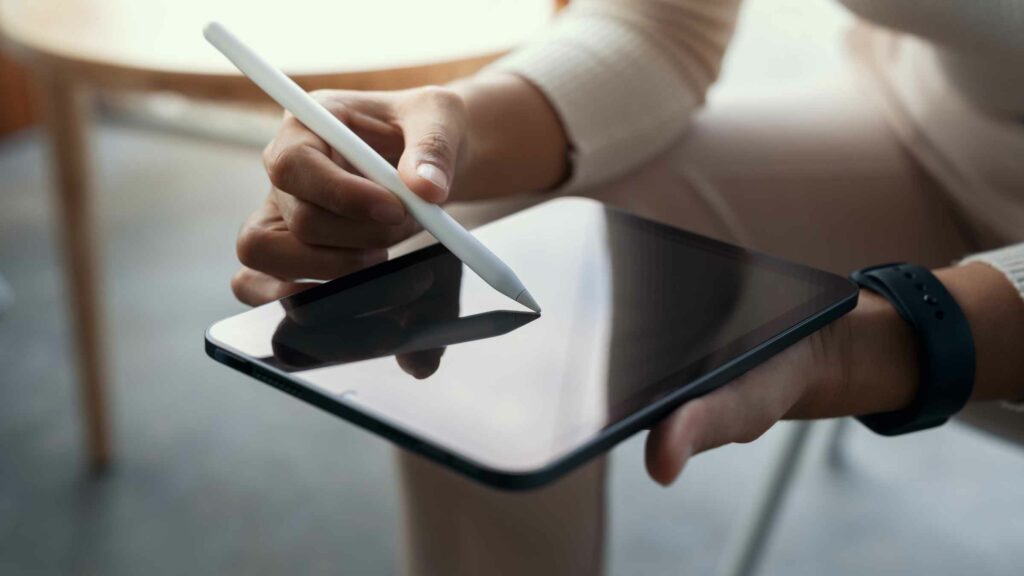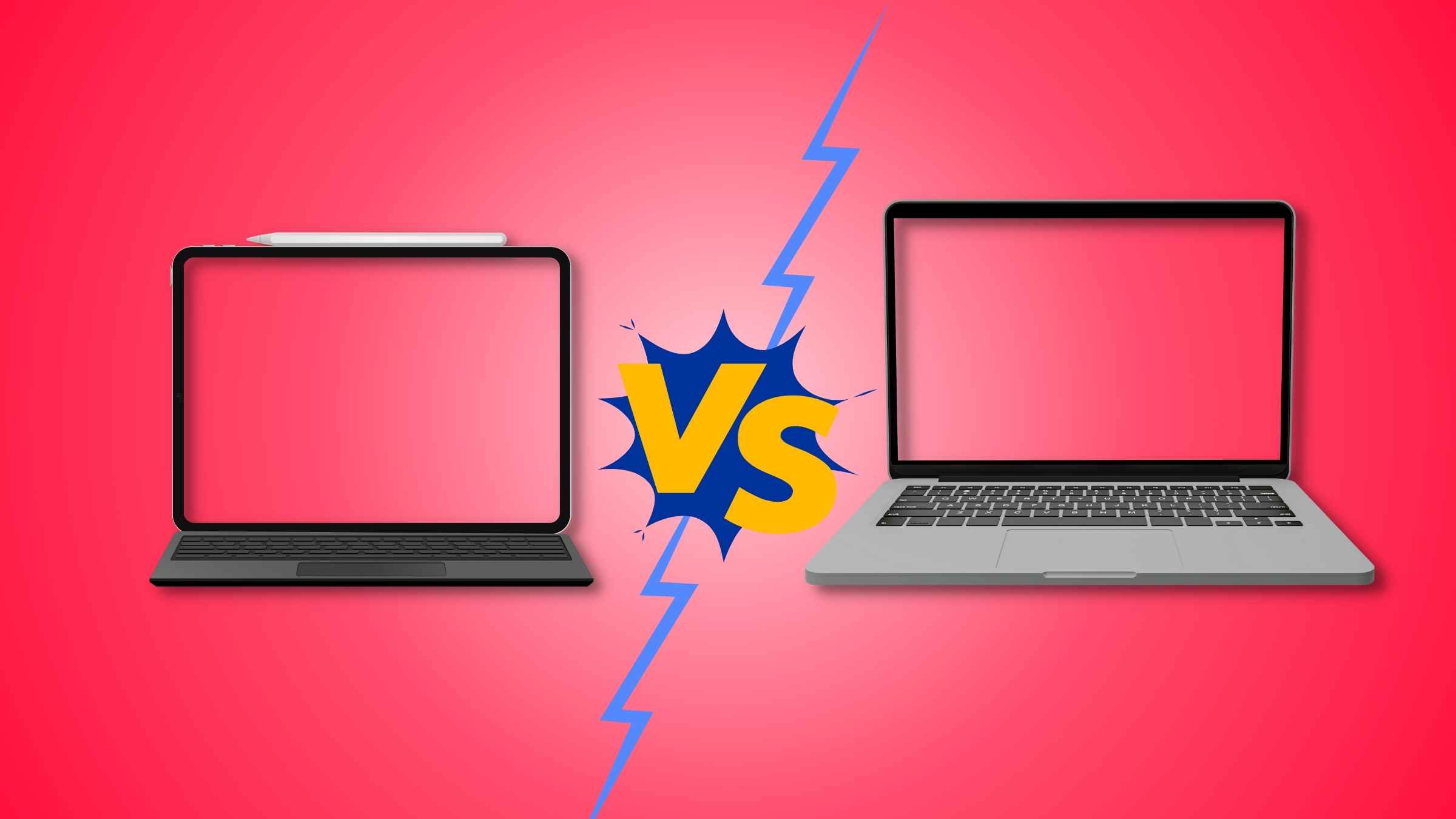In an era where the iPad and MacBook are pushing the boundaries of productivity and versatility, a fascinating question arises: Could the iPad eventually replace the trusty MacBook? And if not, what keeps them from achieving full parity?
While it’s conceivable that iPads might serve as adequate MacBook substitutes for certain users, a complete replacement seems highly unlikely.
iPads have undeniably grown in power, especially with the introduction of the formidable M2 Chip, enabling them to tackle increasingly sophisticated tasks. However, they still grapple with some constraints compared to their MacBook counterparts, such as smaller screens, less processing muscle, and the inability to run full-fledged desktop applications.
Let’s delve into the key reasons why iPads won’t fully supplant MacBooks:
Apple Already Has macOS
One of the fundamental reasons why Apple isn’t going to be treating the iPad as a laptop is simply because they already have an entire ecosystem devoted to desktop use – macOS.
Think about it this way: the iPad absolutely dominates the current consumer market when it comes to tablets and has a commanding market share lead over any of its competitors. In essence, the iPad is doing great for what it was meant to be.
On the other hand, Apple’s push into creating its own silicon has also led its own desktop-class chips, like the M1 Pro and M1 Max to push out stellar performance at a very low TDP. In essence, business is booming for both of these sectors.
When that’s happening, why would Apple jeopardize the future of its macOS lineup by introducing features that would allow the iPad to gain more of its functionality? While yes chips like the M2 are now present in some iPads, they do not have nearly as much functionality and flexibility as the chips have in MacBooks.
So, you aren’t likely to see a major transition for the iPad in terms of design language or philosophy until Apple decides to completely shut down their Macbooks, which is unlikely to happen anytime soon. That would be bad for their business.
iPadOS Is Limited

There still isn’t support for true multitasking even with the new stage manager feature. Most peripherals cannot be connected, the file explorer is dainty and there are a lot of bottlenecks that iPadOS itself has.
For instance, Chrome extensions are still not supported on the iPad(sure, there are workarounds to get them), alongside a few other unusual quirks like not being able to properly customize your home screen and connect multiple monitors to extend your screen the way you wish.
If you’d make the argument that Apple limits iPadOS on purpose, I’d honestly agree. But it is what it is, and currently, there seem to be no plans for iPadOS to even match the functionality of a Macbook in any way possible.
There are applications like Procreate that make iPad unique. You can use it on a MacBook or any other tablet/computer. It is exclusive to iPad.
So I hope you see the pattern here. Apple doesn’t want their devices to compete with each other.
Most Desktop Applications Aren’t Available On The iPad

You cannot run a desktop application on an iPad. Yes, versions of powerful applications like Photoshop do exist. But, while they do have many intricate features, they certainly do not match up to their desktop versions.
For instance, most of what Photoshop is known for in terms of AI-based shape selection and image transformation is simply not available on the iPad. And most other applications that you’d use daily for productivity are just not supported on the iPad.
So, your productivity suite, whether you are a DJ or a video creator, will more likely be better off on a MacBook than an iPad. While yes, the iPad does serve some niche use cases better, an artist, for instance, even they’d have to resort to a laptop to do some final touches.
As of yet, while developer support is steadily increasing, most desktop applications will never be ported to iPad OS.
Whatever the case may be, you can’t expect an iPad to compete with a Macbook, at least in terms of productivity, when it isn’t even able to utilize all the applications that its desktop counterpart is able to.
Popular Apps that are supported on MacOS, but no iPadOS.
- 3D Modeling and Animation Software: Software like Autodesk Maya, Cinema 4D, etc.
- Professional Video Editing Software: Applications like Final Cut Pro X and Adobe Premiere Pro, etc.
- Professional Audio Production: Tools like Logic Pro X and Pro Tools, etc.
- Advanced Graphic Design: Adobe Photoshop and Adobe Illustrator, etc.
- Coding and Development Environments: Software for software development, like Xcode, Visual Studio Code, etc.
Lack Of Customization
Customization is the key to a good desktop experience. macOS allows you to customize every nook and cranny of your system and lets you access the terminal, unlock the kernel, and boot into recovery whenever you need to.
On the other hand, the iPad is fairly limited in this regard. What you see is what you get, and there’s almost no tangent for actual customization. By this, we mean that you can’t change where your time and date show up, the lock screen is fairly static; there’s hardly any room for customization.
So, power users like us refrain from using the iPad simply because we can’t even re-arrange the icons unless they are in a certain order. While this may be great for casual users who don’t want to go through the pain of setting up things from scratch, you’ll end up annoying a lot of users who want that control from their system.
Little Developer Support
You still cannot code on an iPad for any language other than Swift. Period. Even with Swift, the functionality is extremely limited. Until you remote into your Macbook, there is no way to compile and run code locally on your iPad, even though it has all the processing power to do so.
This isn’t just limited to Xcode. In fact, you can’t run code from any popular programming language on the iPad. This, too is a major bottleneck for the device. Firstly, you are shutting down a huge chunk of developers who might be interested in the tablet if it could appease their coding needs.
Secondly, the restricted nature of iPadOS does not allow for much when it comes to their APIs. So, when developing an application for the iPad, a specific set of guidelines must be followed alongside the fact that there are tons of components of the iPad that a third-party application developer simply cannot access.
Which iPad is the closest to a laptop?
iPad Pro (12.9-inch, M2) It’s the most powerful iPad to date, and if you intend to go on with your life without owning a laptop, this is the closest iPad to a laptop. For some people, it’s enough. It all comes down to your preferences and needs.
It has a larger screen size and more powerful processors than other iPad models(M2), which makes it well-suited for tasks like photo and video editing, 3D modeling, and programming. The iPad Pro also has a number of features that make it more laptop-like, such as support for an external keyboard(The best fit is the Magic Keyboard) and the ability to run multiple apps at once, external monitors, and a stage manager.
iPad Pro is the closest to a laptop in terms of functionality among the iPad models, but it still has some limitations compared to a MacBook, which I already mentioned above.
Conclusion
Ultimately, whether an iPad or a MacBook is the better choice will depend on your specific needs and preferences. Some people may find that an iPad is sufficient for their computing needs, while others may prefer the more traditional computing experience of a MacBook.
In terms of functionality and specs, The iPad can’t match up to a Macbook, at least for now. This is because of the reasons that I’ve mentioned above. Including customization, the OS itself, and others. But, most importantly, Apple will never have two products compete with each other. It just doesn’t make sense. Otherwise, they will make one of their products obsolete, which, as you can imagine, isn’t very good for business.
Therefore, the iPad is meant for a very different use case that includes content consumption and creative productivity. In that space, it definitely reigns supreme. But, when it comes to providing a desktop experience, the iPad is not taking the throne off the Macbook anytime soon.
Related Articles:
iPad vs Laptop
How Long Do iPads Last on Average?
How to Use iPad as Your Second Monitor
How to Request a Desktop Site on Your iPad (Step-by-Step Guide)

I'm a writer and editor in iPads & Android Tablets, Windows Tablet section. I'm passionate about technology, especially about tablets. I'm on a mission to assist people in discovering their ideal tablets. In addition, I'm dedicated to producing helpful how-to guides and sharing top-notch tips and tricks. In my early carrier I founded and became and editor at worldoftablet and have been a guest author at many other tech blogs. In wolfoftablet I'm focusing on iPads, Tablets, Apple Pencil, Apps, Reviews, Buyers Guides and Tablet Accessories. In free time I like to play games on my PS5 or iOS.


